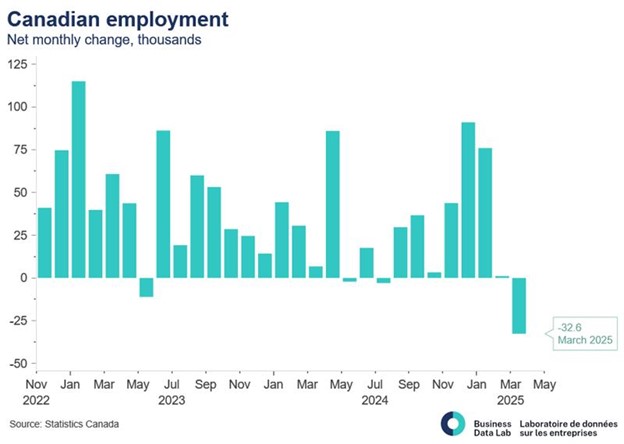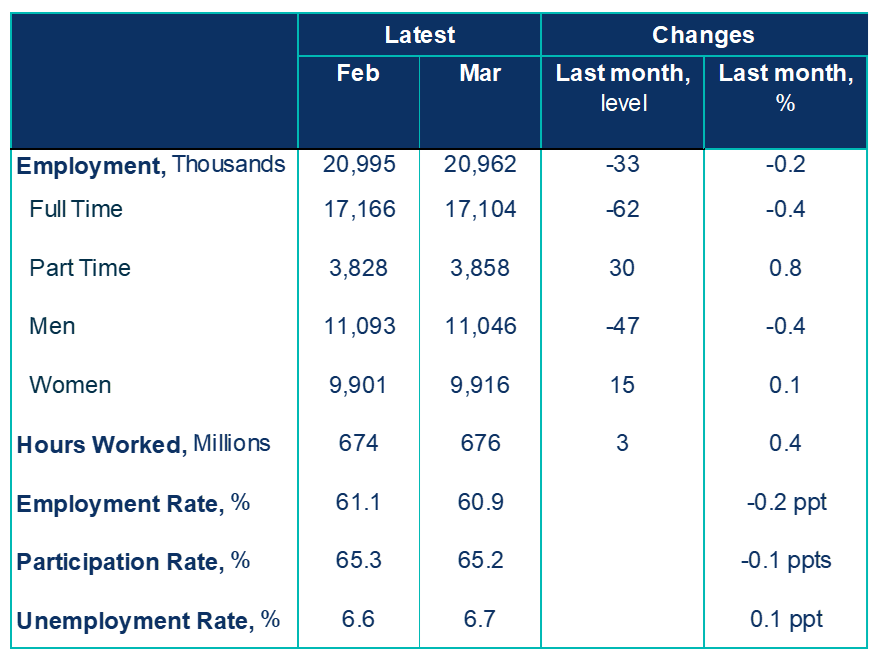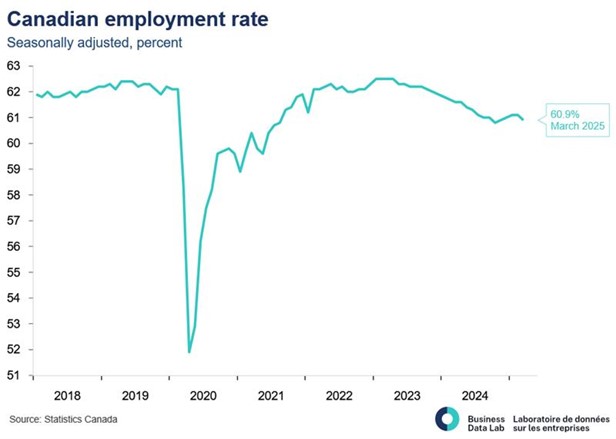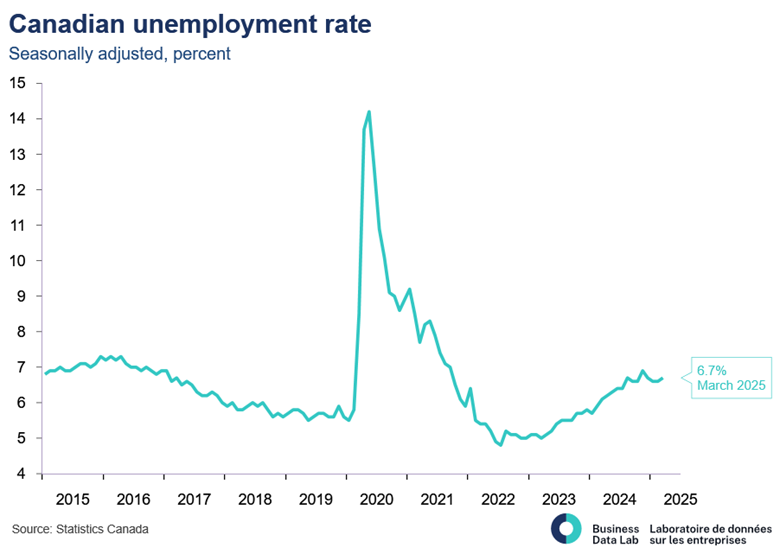Blog /
Labour Force Survey March 2025: Bad News Rising
Canada’s resilient labour market may finally be starting to crack.


Canada’s resilient labour market may finally be starting to crack. Employment fell by 33,000 jobs in March, with losses concentrated among older men, full-time workers and the private sector.
While there’s no clear spike in layoffs yet — and GDP still on track for a decent first quarter, partly due to the front-running of U.S. tariffs — warning signs are flashing following another disastrous tariff announcement by President Trump earlier this week. Financial markets are now increasingly betting that the Bank of Canada will continue cutting interest rates on April 16.
KEY TAKEAWAYS
- After taking a pause in February (+1k), Canadian employment fell by 33,000 jobs in March. This was worse than the modest gain of 10,000 jobs that markets expected. Job losses were concentrated for (older) men, full-time work and the private sector. The employment rate (which is the share of the population 15+ in paid employment) shed 0.2 percentage points (ppts).
- The unemployment rate ticked up 0.1 ppts to 6.7%, and longer-term unemployment (those unemployed for 27+ weeks) is rising. There doesn’t yet appear to have been a major spike in layoffs in March, but with Trump’s global tariff wall announced earlier this week, which has caused global financial markets to tumble, and some worrying signs at major auto plants in Canada, this is something we will be watching closely in the coming weeks.
- Hours worked bounced back slightly, rising 0.4% in March after falling 1.3% in February ─ partly reflecting major snowstorms. For the first quarter of 2025, hours worked grew by 2% at annual rates, suggesting Canada’s economy will record a decent first quarter when GDP numbers are released at the end of May.
- Average hourly wages were up 3.6% year-over-year, a slight slowdown from the 3.8% recorded in February, but have clearly lost steam over the last 6 months as the labour market cools.
- By industry, employment was down in wholesale and retail trade (-29k, -1.0% only partly offsetting gains a month earlier), information, culture and recreation (-20k, -2.4%) and agriculture (-9k, -3.9%). Conversely, there were job gains in other services (+12k, +1.6%) and utilities (+4k, +2.8%).
- Regionally, provincial job losses were concentrated in Ontario (-28k; -0.3%) and Alberta (-15k; -0.6%), two provinces we previously identified as being particularly exposed to U.S. tariffs. Saskatchewan saw job gains (+7k; +1.1%). Employment was essentially unchanged in the other provinces.
SUMMARY TABLE

CHARTS
















